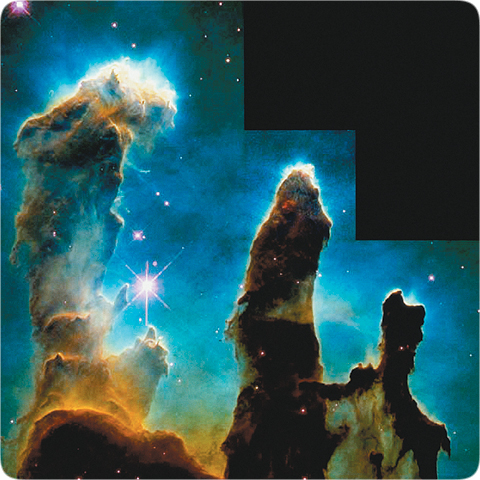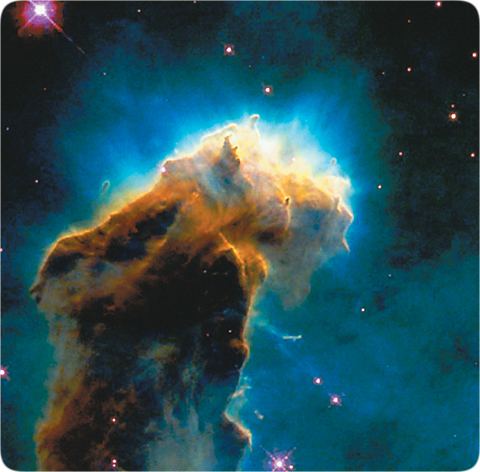Below is the online edition of In the Beginning: Compelling Evidence for Creation and the Flood,
by Dr. Walt Brown. Copyright © Center for Scientific Creation. All rights reserved.
Click here to order the hardbound 8th edition (2008) and other materials.
61. Star Births? Stellar Evolution?
Evolutionists claim that stars form from swirling clouds of dust and gas. For this to happen, vast amounts of energy, angular momentum, and residual magnetism must be removed from each cloud. This is not observed today, and astronomers and physicists have not explained, in an experimentally verifiable way, how it all could happen.a
The most luminous stars in our galaxy, called O stars, are “burning fuel” hundreds of thousands of times faster than our Sun. This is so rapid that they must be quite young on an evolutionary time scale. If these stars evolved, they should show easily measurable characteristics, such as extremely high rates of rotation and enormous magnetic fields. Because these characteristics are not observed, it seems quite likely these stars did not evolve.
Yes, we frequently see stars die as violent explosions called supernovas.b Star births, on the other hand, would appear as new starlight not present on the many photographic plates made decades earlier. Instruments which can detect dust falling into and forming supposedly new stars have not done so.c Instead, stars that some astronomers believe are very new are expelling matter. We have seen hundreds of stars die, but we have never actually seen a star born.d
Also, some stars are found where astronomers agree they could not evolve, near the center of our galaxy. These short-lived stars orbit a massive black hole, where gravity is so strong that gas and dust clouds could never evolve into a star. Instead, the black hole’s massive gravity would pull such clouds (supposedly evolving stars) apart.e
Nor could stars have evolved in globular clusters, where up to a million stars occupy a relatively small volume of space. [See Figure 230 on page 470.] Wind and radiation pressure from the first star in the cluster to evolve would have blown away most of the gas needed to form the other stars in the cluster.f In other words, if stars evolved, we should not see globular clusters, yet our galaxy has about 200 globular clusters. To pack so many stars that tightly together requires that they all came into existence at about the same time.
A similar problem exists for stars that are more than 20 times more massive than our Sun. After a star grew to 20 solar masses, it would exert so much radiation pressure and emit so much stellar wind that additional mass could not be pulled in to allow it to continue to grow.g Many stars are heavier than a hundred suns. Black holes are millions to billions of times more massive than the Sun. Poor logic is involved in arguing for stellar evolution, which is assumed in estimating the ages of stars. These ages are then used to establish a framework for stellar evolution. That is circular reasoning.h
In summary, there is no evidence that stars evolve, there is much evidence that stars did not evolve, and there are no experimentally verifiable explanations for how they could evolve and seemingly defy the laws of physics.i

